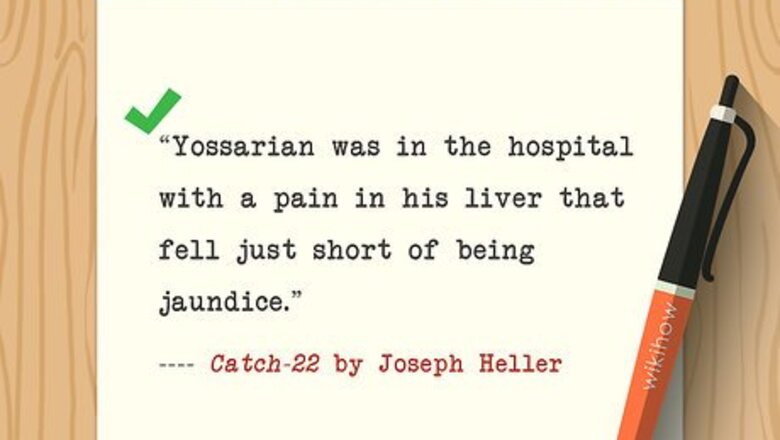
views
Writing a Hook First Line
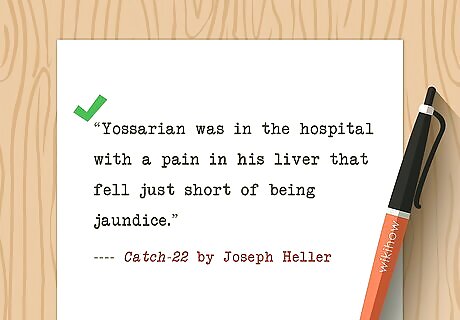
Create a strong, engaging description. One of the more effective ways to craft an opening line for your book is to start with a description that is engaging and will leave your reader asking questions. You want your reader to be in a state of wonder and pique their curiosity so they have no choice but to turn the pages of your book to find out more. For your first line, you can use a strong, interesting description to describe an image of your main character in action. For example, the first line of Joseph Heller’s novel Catch-22: “Yossarian was in the hospital with a pain in his liver that fell just short of being jaundice.” This is a strong opening because the main character is introduced to the reader right away, he is placed in a setting, and he has an issue he has to deal with. You can also start with a description of the setting of your book. For example, the first line of J.R.R. Tolkien’s The Hobbit: “In a hole in the ground there lived a hobbit.” This is a simple, direct opening that capture the reader’s attention.
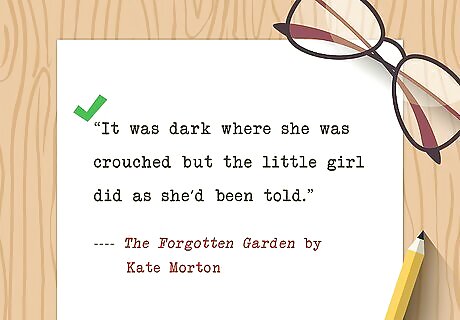
Start at a pivotal plot point. You can also create a first line that introduces the reader to a pivotal plot point, starting right in action. This will allow you to hit the ground running and get the reader invested in the plot of the story right away. For example, the opening line of Kate Morton’s The Forgotten Garden: “It was dark where she was crouched but the little girl did as she’d been told.” This is a good hook opening line because it places the reader in the action, creating a situation that suggests danger or fear for the “little girl.” This is also known as an “in medias res” opening.
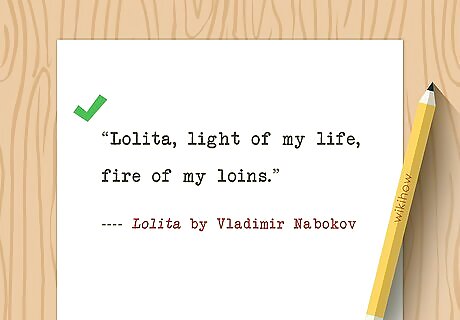
Introduce a compelling narrative voice. You can also start your book with a narrative voice that is unique and compelling. This is especially effective if your book has a first person narrator, as the narrative voice can really propel the story along. You can also use a compelling third person voice to act as the narrator who introduces characters in an engaging way. For example, the opening line of J.K. Rowling’s Harry Potter and the Sorcerer's Stone: “Mr. and Mrs. Dursley, of number four, Privet Drive, were proud to say that they were perfectly normal, thank you very much.” This is a third person narrative voice that has attitude and color to it, drawing readers into the story. The first line of Vladimir Nabokov’s novel Lolita is another good example, as the novel begins: “Lolita, light of my life, fire of my loins.” Right away the reader is prepared for a unique narrator who is not afraid to embellish, entertain, and disturb.
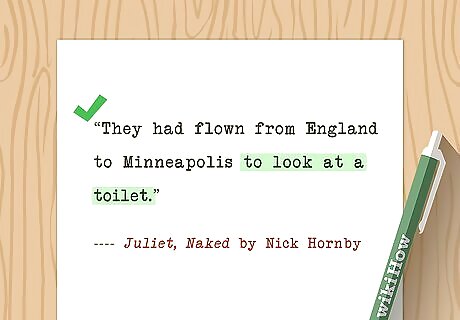
Start with an unusual set up. You can also draw your reader in by creating a situation for your characters that is unusual or strange. This could then intrigue the reader enough to continue on with the story and see how the characters deal with the unusual set up. For example, the opening lines of Nick Hornby’s novel Juliet, Naked: “They had flown from England to Minneapolis to look at a toilet.” This first line pulls the reader in right away and sets up a strange, engaging situation.
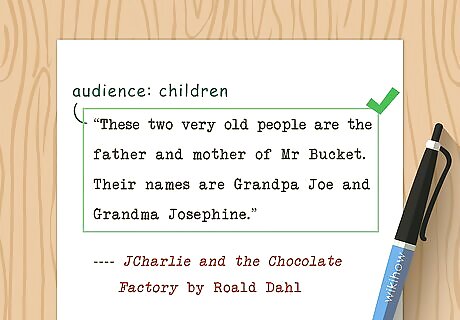
Write to your audience. You can create a strong first line by focusing on what your audience would be interested in reading about first. Try to picture your ideal reader and consider how old they are, what they are interested in, and what type of writing they might enjoy. You can then use this ideal reader and write a first line just for them. For example, if you are writing a book with a reader who is young adult, you may start the story with a young adult in mind. Consider what details or moments you might include if you were writing for a young adult. This may also be a useful tactic if you are writing a hook for a book that is non-fiction, as you may consider what fact, anecdote, or moment in the history you are writing about would most spark your reader’s interest.
Creating a Hook Summary for a Book
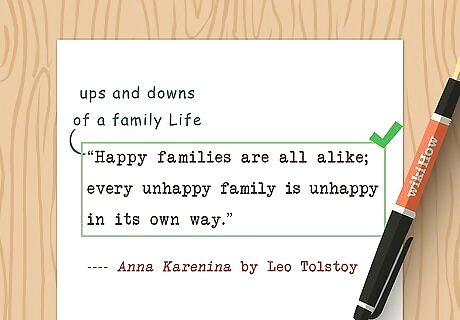
Recognize the purpose of the hook. The hook for your book is different from a synopsis or a plot summary in that it should not reveal the entire plot of the book or provide too much detail about your book. Instead, the hook should capture what your book is about in 1 to 2 sentences total and entice readers at the same time. Your hook should grab your reader’s attention in 30 seconds and act like the elevator pitch for your book. Having a strong hook in your book proposal or in the marketing material for your book can make it seem more attractive to an editor or a literary agent. Your hook should also explain how your book is different from the other books that are currently available. If you are writing in a specific genre, the hook should also tell your reader how and why your book is different from the other books published in that genre.
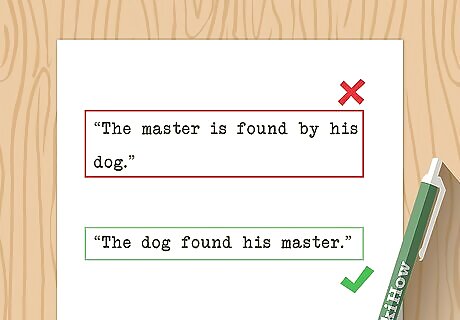
Use the active voice. You should always use the active voice in your hook as well as active verbs so your hook feels immediate and engaging. Avoid the passive voice and passive verbs as this can make your hook seem dull, stale, and not all that memorable to readers. Most hooks for a book are written in the present tense, rather than the past tense, to make the hook feel more active to the reader. You should try to always use the present tense to describe the action in the book.
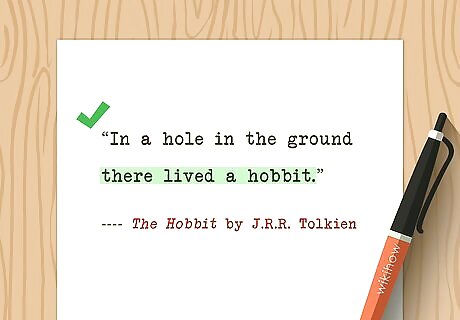
Address the main plot. Your hook should also include the main plot or the issue at stake in the story. Try to address the main conflict or crisis in a few words, using bold and descriptive sentences. Do not try to explain the crisis. Instead, simply describe it. You should use engaging nouns in your hook to describe the main plot. Avoid too many adjectives or adverbs. You want the hook to be descriptive, but not long-winded or too full of descriptors. When in doubt, simple is better for the hook. Make sure you do not reveal the ending of the book in the hook, only the main plot. The ending of the book should be included in your synopsis of the book, not in the hook.
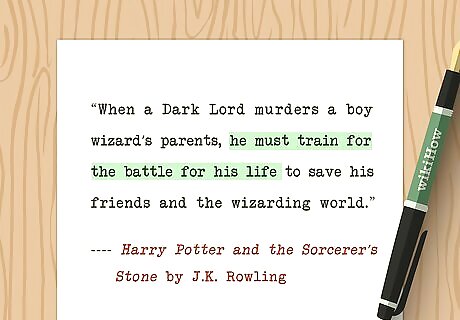
Focus on character and action, rather than theme. It may be tempting to simply describe the main themes of the book. But this can end up sounding too generic and familiar. Avoid describing themes and instead focus on your characters and the action of the book. You can try the following formula to create your hook, using character and action: “When [opening conflict] happens to [characters], they must [overcome conflict] to [complete their quest].” For example, the hook for J.K. Rowling’s Harry Potter and the Sorcerer’s Stone could be: “When a Dark Lord murders a boy wizard’s parents, he must train for the battle for his life to save his friends and the wizarding world.” This hook is simple and straightforward, so it will be more likely to entice readers.

Read the hook out loud and revise it. It may help to read the hook out loud once you have created it to hear how it sounds. Notice if there are any awkward phrases or vague nouns that you can replace with more interesting, active nouns. Make sure the hook is in the present tense and does not reveal the ending of the book. You can then revise the hook so it is more concise and to the point. Your hook should be no longer than 1 to 2 sentences and should leave the reader wanting to read your book in full.


















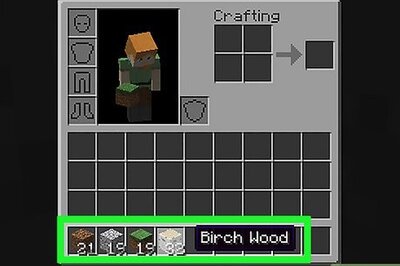

Comments
0 comment